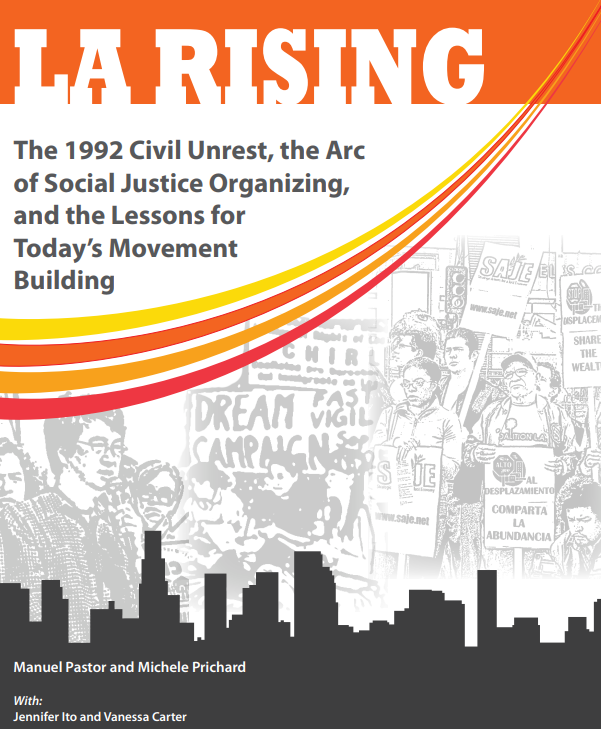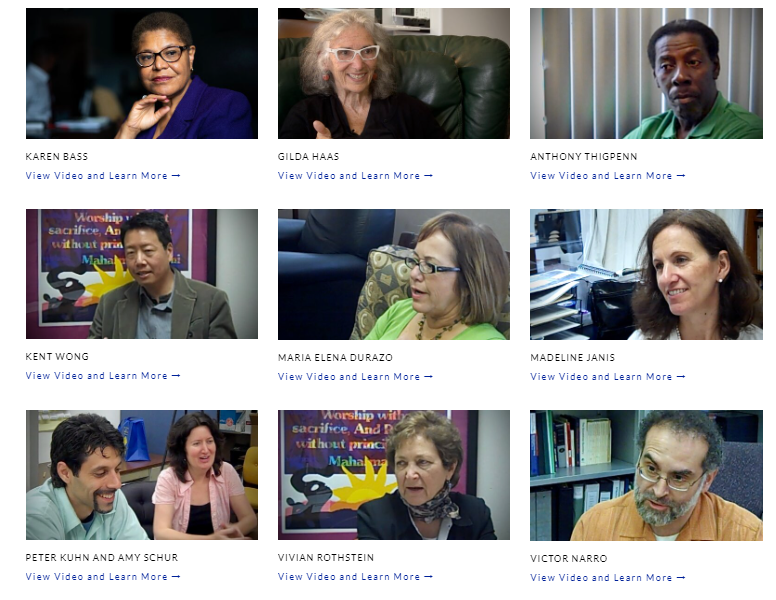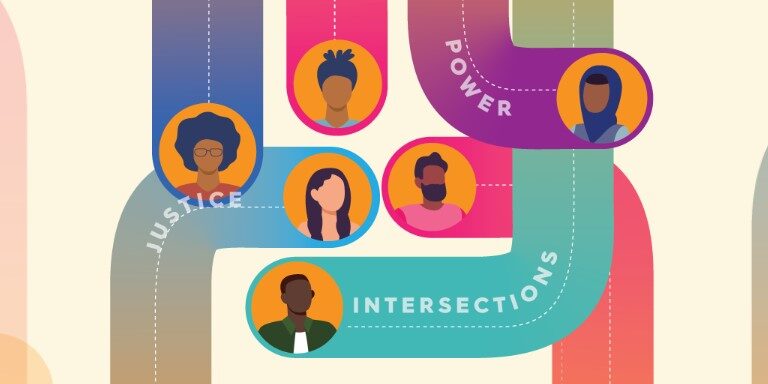
L.A. Rising: The 1992 Civil Unrest, the Arc of Social Justice Organizing, and the Lessons for Today’s Movement Building
April 2012
From 2008 to 2019, the USC Equity Research Institute (ERI) published reports under our previous name, the USC Program for Environmental and Regional Equity (PERE).
By Manuel Pastor and Michele Prichard
with Jennifer Ito and Vanessa Carter
Something remarkable has happened in Los Angeles since 1992 – the region transformed from one whose residents were frustrated enough to burn down a city to one where innovative social movements have forged precedent-setting policies, from community benefits agreements to college and career pathways to carwash worker protections.
How has L.A. risen from the ashes of 1992? A report co-authored by USC PERE’s Manuel Pastor and Liberty Hill Foundation’s Michele Prichard, LA Rising: The 1992 Civil Unrest, the Arc of Social Justice Organizing, and the Lessons for Today’s Movement Building, suggests that from the civil unrest emerged a new set of organizations that has led an arc of organizing grounded in an intentional bridge-building and movement-building approach. The report draws on interviews with over 20 movement leaders, a literature review, and the authors’ own experiences.
L.A. Rising points to ten innovations central to the L.A. model. They include a deep commitment to building power from the bottom-up through multi-racial and multi-ethnic organizing, labor-community alliances, movement building, and scaling up. Of equal importance has been the emphasis on multiple capacities and strategies including an effort to reframe and revision, viable policy innovations, and a willingness to play the inside-outside game. And it could not have happened without the commitment of a key set of funders who were willing to place early bets on grassroots organizing – eventually movement-building, themselves, to attract national philanthropic partners.
As our nation looks for a way forward from our economic crisis, political divides, and racial rumblings that occasionally break the surface, it is this type of patient, on-the-ground work that can actually hold economies accountable and reweave the fabric of our tired society. It is through movement building that together we can build a stronger, more inclusive America.
Download report
A Snapshot of Social Movement Moments, Los Angeles, 1980-2012
L.A. RISING: The 1992 Civil Unrest, the Arc of Social Justice Organizing, and the Lessons for Today’s Movement Building identifies ten lessons for movement building based on our interpretation of a twenty-year arc of social justice organizing in Los Angeles. Those conclusions were drawn from a sample of organizations and a subset of their work. We ask for your patience with our partial coverage – our sins of omission are not sins of commission – in both the report and the chart inside, which presents a matrix of key themes, organizations, and events. Time, space, and resources simply did not allow for full coverage of all the great work that has taken place in Los Angeles.
We ask for your assistance in filling the gaps by emailing information on your favorite “movement moment” to eri@dornsife.usc.edu. A better world is possible – and, with your help, so is a better chart.

Activist Video Archive: L.A. Rising Collection
Twenty years after the Civil Unrest, Michele Prichard of the Liberty Hill Foundation interviewed social justice leaders in Los Angeles to discover lessons that could be learned regarding the 1992 Civil Unrest in Los Angeles and how these leaders went on to connect community organizing, leadership development, coalition – building, and electoral engagement into a powerful force for social change – using the civil unrest as a departure point.




